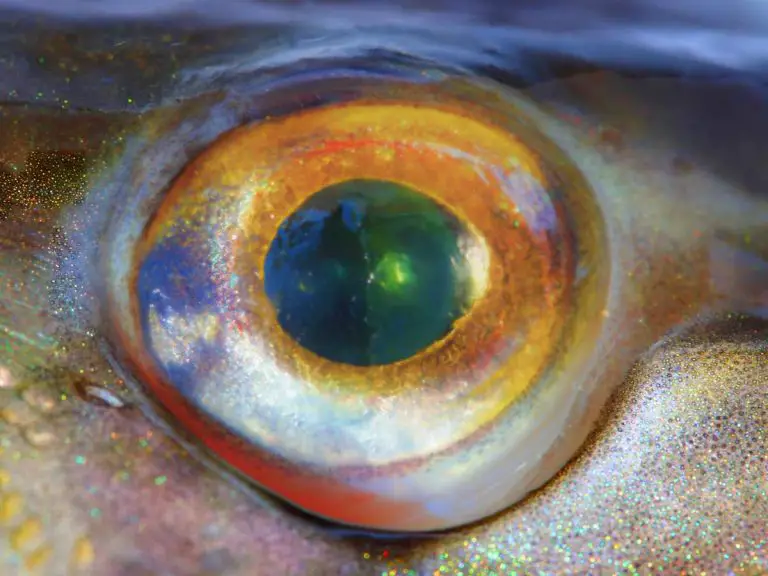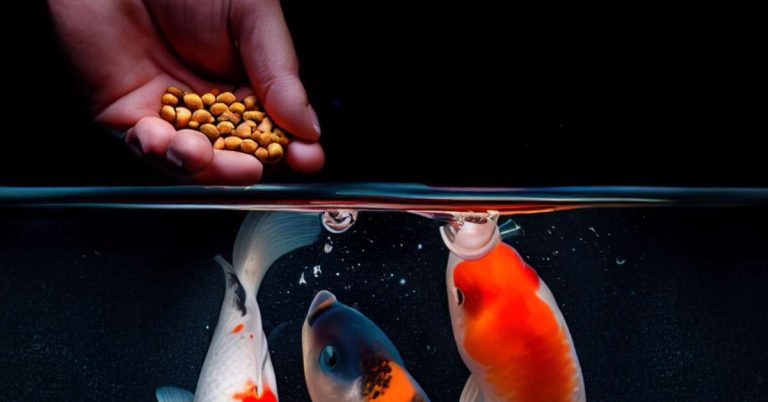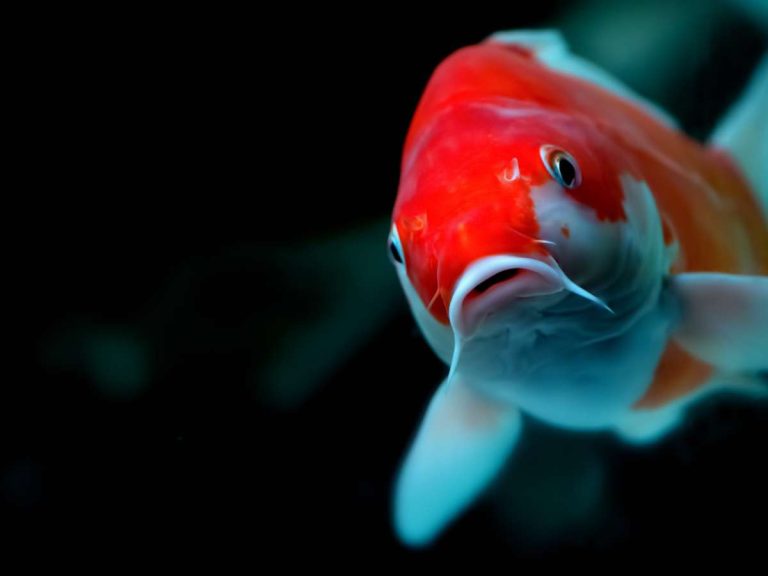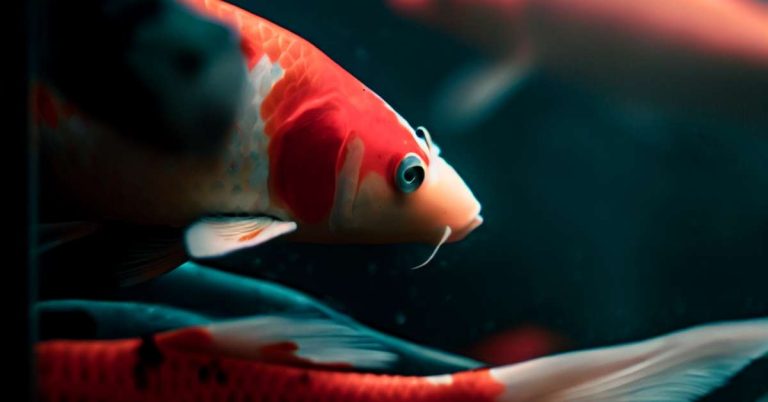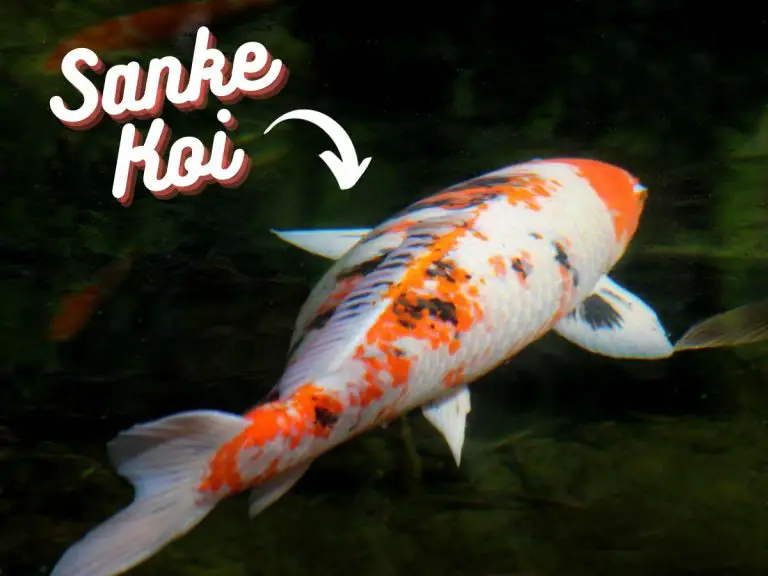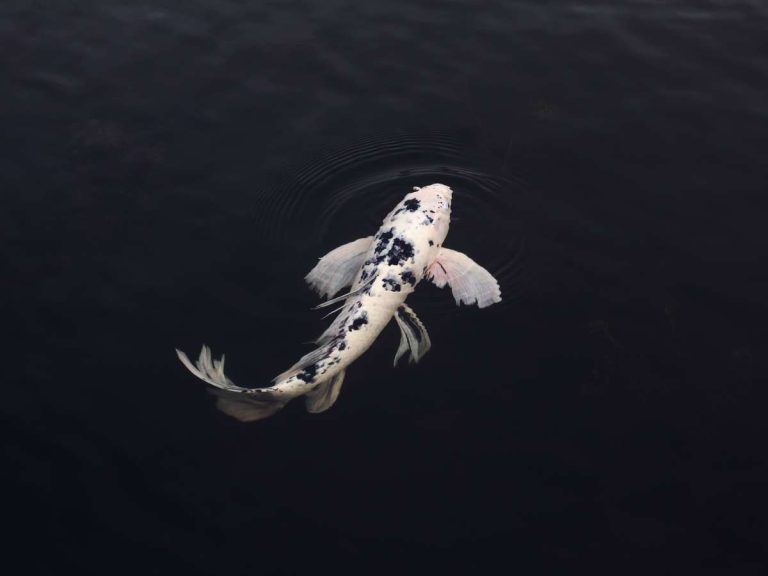How Much Do Koi Fish Cost? Why Koi Cost So Much More Than Other Fish
The price of koi fish can vary from $5 to more than $10,000 based on several factors. These factors include the quality of the fish, the size of the fish, the age of the fish, and the breed or variety of the fish.
When it comes to quality, koi fish are graded, and different grades have corresponding prices.
The size of the fish also plays a role in determining the price, with larger fish generally being more expensive.
Additionally, the age of the fish can affect the price, as older fish may be more valuable.
Finally, the breed or variety of the koi fish can impact the price, with some breeds being more sought after and therefore more expensive.
Taking all of these factors into consideration, the average cost of koi fish can vary significantly. It’s important to consider these factors when purchasing koi fish to ensure you are getting the best value for your money.
For the best Koi at the best price, it’s often best to buy from a reputable online Koi farm. These type of dealers can ship Koi overnight in the most humane way possible, ensuring you get your Koi happy and in optimal condition.
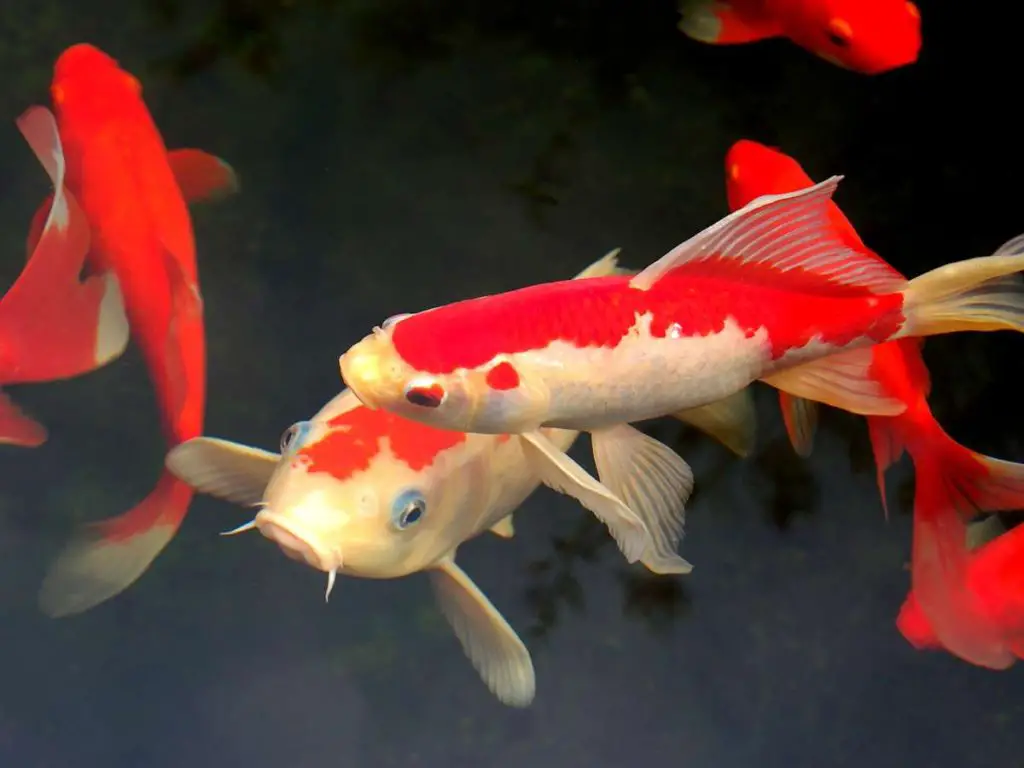
Understanding the factors influencing the price of koi fish
One of the most important aspects to consider when buying koi fish is the price. The cost of these beautiful creatures can vary greatly, depending on several factors. Let’s take a closer look at some of the key factors that influence the price of koi fish.
Quality of the fish
When it comes to koi fish, quality is a major factor in determining their price. Koi fish are graded based on their coloration, pattern, and overall appearance. Here is a reference table that shows different grades of koi fish and their corresponding prices:
| Grade | Price Range |
|---|---|
| Showa | $100 – $500 |
| Kohaku | $50 – $300 |
| Sanke | $30 – $200 |
Size of the fish
The size of the koi fish is another factor that can significantly impact its price. Generally, the larger the fish, the higher the price. Below is a reference table that shows common sizes of koi fish and their price ranges:
| Size | Price Range |
|---|---|
| 4-6 inches | $10 – $30 |
| 8-12 inches | $40 – $100 |
| 14-18 inches | $150 – $300 |
Age of the fish
The age of the koi fish is also taken into consideration when determining its price. The older the fish, the higher the price. Here is a reference table that shows different age groups of koi fish and their associated prices:
| Age Group | Price Range |
|---|---|
| 1-2 years | $20 – $50 |
| 3-5 years | $60 – $200 |
| 6+ years | $250 – $500 |
Breed and variety of koi fish
The breed and variety of the koi fish also play a role in determining its price. Some breeds and varieties are more sought after and therefore command higher prices. Here are some popular breeds and varieties of koi fish and their average prices:
- Kohaku – $50 – $300
- Sanke – $30 – $200
- Showa – $100 – $500
- Butterfly – $20 – $150
- Hi Utsuri – $100 – $300
How Much Do Koi Fish Cost On Average?
When it comes to buying koi fish, it’s important to have a general idea of the average prices you can expect. The cost of koi fish can vary depending on factors such as their size, grade, and breed. Let’s take a closer look at the average prices for different sizes and grades of koi fish.
| Grade | Size | Price Range |
|---|---|---|
| Standard | 6-8 inches | $20-$40 |
| Mid-Grade | 8-12 inches | $50-$100 |
| Top-Grade | 12-18 inches | $150-$300 |
| Show-Grade | 18 inches+ | $500+ |
The average costs mentioned here are just rough estimates and can vary based on the individual fish and where you buy them. Keep in mind that these prices are for single fish and may increase if you’re looking to buy a pair or a group of koi fish.
It’s important to note that the price of koi fish can increase significantly as they grow and mature. Younger fish are generally more affordable, while larger, more mature specimens can cost a substantial amount.
The quality and grade of the koi fish will also have a significant impact on their price. Standard grade koi fish are considered more affordable, while show-grade koi fish, with their stunning colors and patterns, will be at the higher end of the price spectrum. It’s essential to determine your budget and understand how different grades of fish align with your preferences.
Why Koi Are So Expensive Compared To Other Fish
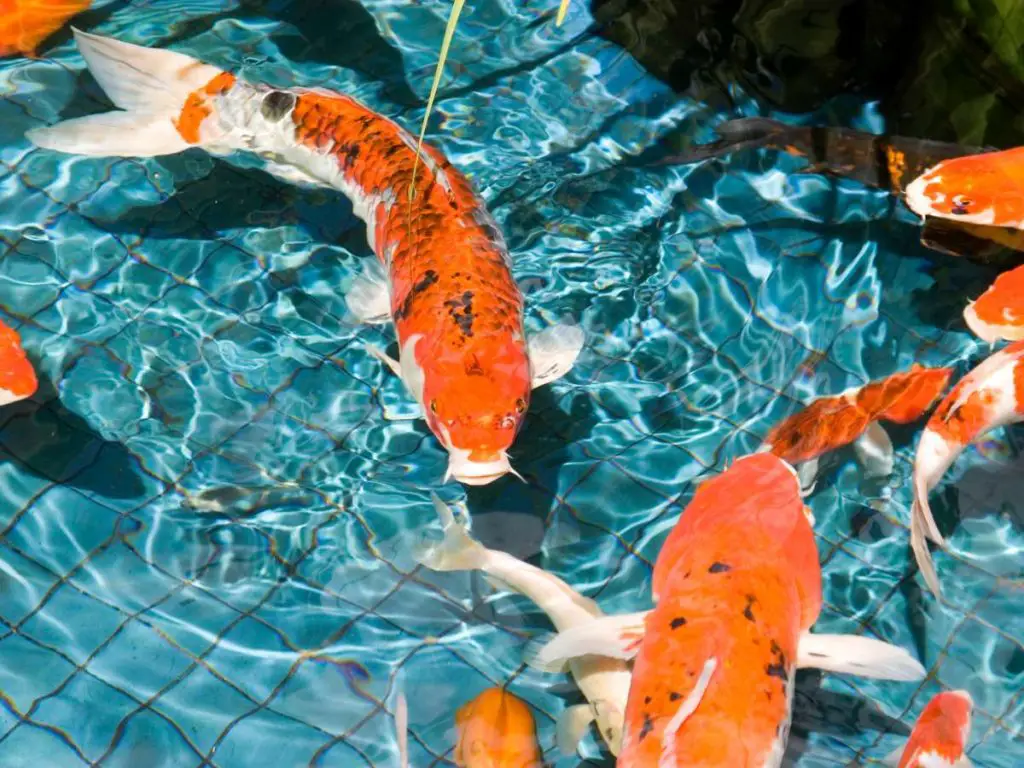
Koi fish, often revered as “living jewels” or “swimming art”, frequently come with a heftier price tag compared to many other fish species. The reasons behind their higher costs are multifaceted and can be attributed to several key factors:
- Breeding and Genetics: Koi have been selectively bred for generations to achieve specific patterns, colors, and scales. This breeding process requires expertise, time, and patience. The more rare and perfect the pattern, the higher the price the koi can fetch.
- Maintenance Costs: Koi ponds require meticulous care. The water quality, temperature, and environment need to be maintained at specific levels for the koi to thrive. This includes expensive filtration systems, regular water testing, and high-quality feed.
- Growth and Maturation: Koi can grow to be quite large, often up to 3 feet in length, depending on the variety. This growth requires time, often several years, during which breeders invest in their care, feeding, and housing.
- Import and Export Fees: Many of the highest quality koi are imported from breeders in Japan. The importation process includes transportation costs, health inspections, and other related fees.
- Health and Longevity: Koi can live for decades, with some even reaching over a century old! Their long lifespan and robust health, when cared for properly, can justify the initial investment for many enthusiasts.
- Cultural and Symbolic Value: In many cultures, especially in Japan, koi are symbols of luck, prosperity, and good fortune. Their cultural significance can add to their market value.
Koi vs. Other Fish: Reason For Cost Differences
| Factor | Koi | Other Common Fish |
|---|---|---|
| Breeding Process | Selective, multi-generational breeding for specific traits. | Less selective, bred for quantity. |
| Maintenance | High-quality ponds with top-notch filtration and regular maintenance. | Basic aquarium or pond setups. |
| Growth Time | Several years to reach maturity. | Often a few months to a couple of years. |
| Import/Export | High fees for premium breeds from renowned locations like Japan. | Minimal fees for local breeds. |
| Lifespan | Can live for decades, some even over 100 years. | Typically shorter lifespans, ranging from 3-10 years. |
| Cultural Value | Symbols of luck, prosperity, and perseverance. | Minimal cultural or symbolic significance. |
Understanding the various factors that contribute to the cost of koi fish offers a clearer picture of why these aquatic beauties are more of an investment compared to other fish. Their unique aesthetics, combined with their rich cultural significance and specialized care requirements, make them a prized possession for enthusiasts and collectors worldwide.
List of the most expensive pond fish
Here’s a list of some of the most sought-after pond fish often purchased for their beauty, charm, and appeal as pets. Prices can fluctuate based on size, coloring, rarity, and lineage, but these figures should give you an idea of what price they can fetch on the market:
- Koi (Nishikigoi) – $50 to $5,000+: These are the most popular and recognized pond fish worldwide. While many can be bought for modest prices, rare varieties with perfect patterns can fetch thousands.
- Butterfly Koi – $50 to $1,000: Recognized by their long flowing fins, they are a variant of traditional koi and can be quite striking.
- Goldfish (Comet variety) – $5 to $50: While common, they are beloved for their hardiness and bright orange coloration.
- Shubunkin Goldfish – $10 to $100: Known for their calico patterns, they resemble koi but are generally smaller and less expensive.
- Golden Orfe (Ide) – $10 to $50: Sleek and fast swimmers, they have a golden sheen and add activity to any pond.
- Sterlet Sturgeon – $50 to $500: Often kept in larger ponds, they are prehistoric-looking and can grow quite large.
- Ghost Koi – $20 to $500: A hybrid between wild carp and koi, they have a metallic sheen and can be quite hardy.
- Sarasa Comet – $10 to $50: A type of goldfish with long fins and bright red-and-white patterns.
- Japanese Trapdoor Snails – $3 to $10 each: Not exactly fish, but they are popular pond pets due to their algae-eating habits.
- Grass Carp – $20 to $150: Often used as a natural way to control pond vegetation, they need to be kept in larger ponds due to their size.
Factors to consider when purchasing koi fish
When buying a Koi fish, there’s more to consider than simply the color of its scales or the shape of its fins. Here are some of the things you should keep in mind when buying and pricing Koi.
Health and condition of the fish
When you’re shopping for koi fish, one of the most important factors to consider is the health and condition of the fish. You want to make sure you’re choosing healthy fish because sick fish can lead to costly medical treatments down the line. Look for fish that have bright and vibrant colors, clear eyes, and smooth scales. Avoid fish that have dull colors, sunken or bulging eyes, or discolored spots on their bodies. It’s also a good idea to observe the fish swimming to ensure they have good mobility and aren’t struggling to move.
Compatibility with other fish and pond conditions
Before bringing home your new koi fish, it’s essential to consider their compatibility with other fish species and the conditions of your pond. Koi fish can coexist peacefully with certain fish and plants, while others may cause issues or even become prey for koi. Some suitable companions for koi fish include goldfish, carp, and certain types of pond plants like water lilies and water hyacinths. Avoid adding aggressive or territorial fish species to your pond, as they may harm or stress out your koi. Additionally, ensure that your pond provides adequate space, filtration, and oxygenation to support the needs of your koi fish.
Where To Buy Koi Fish Locally Or Online
There are countless ways to buy Koi fish, from dedicated Koi farms to your local fish store. Here are some of the most commons ways people get their hands on healthy, premium quality Koi fish.
Local pet stores and fish farms
When it comes to buying koi fish, one of the most convenient options is to check out your local pet stores and fish farms. They often have a variety of koi fish available and can provide helpful advice on caring for them.
Of course, the best place to buy Koi locally will depend on where you live. Here’s some advice for what to look for to separate the good from the mediocre:
- Ask for Recommendations: Start by asking fellow Koi lovers, neighbors, or local gardening clubs if they have any recommended koi suppliers.
- Visit Local Garden Centers: Many garden centers have a pond section and might either sell koi or have recommendations on where to find them.
- Check Reviews: This one goes without saying. Look up local koi breeders or suppliers online and read reviews to get an idea of their reputation.
- Attend Koi Shows: Check to see if there are any local koi shows or events. These can be a great place to meet breeders.
- Inspect Facilities: When you visit a potential seller, observe the cleanliness of their facilities and the health of the fish they have on display. Clear water, active fish, and clean tanks are good signs.
- Ask Questions: A reputable dealer will be knowledgeable and willing to answer any questions about the fish, their origin, health, and care.
- Avoid Buying from Pet Stores: While some pet stores might offer koi, they might not specialize in them, leading to potential health issues or lack of knowledge about proper care.
- Membership: See if the breeder or dealer is a member of national or international koi associations, as this can be a sign of credibility.
- Trust Your Instincts: If something feels off or too good to be true, it might be best to look elsewhere.
Online retailers and breeders
If you prefer the convenience of online shopping, there are numerous trustworthy online sources where you can find koi fish.
For a full list of the best places to buy Koi fish online, check out my personally vetted list of the most well-known dedicated Koi farms that sell online.
Auctions and koi shows
For a unique buying experience and the opportunity to observe a variety of koi fish, attending auctions and koi shows can be a great option. Here, you can find a wide range of koi fish, including rare and valuable specimens.
However, it’s important to keep in mind that the prices at auctions and shows can be competitive, so you’ll need to be prepared for the possibility of higher costs. That said, there are numerous advantages to buying Koi at auction.
- Quality Selection: Koi shows and auctions often feature high-quality fish that have been selected for their color, pattern, and overall health. These events attract top breeders who are keen on showcasing their best specimens.
- Direct Interaction with Breeders: You get the opportunity to speak directly with koi breeders, learning about the fish’s lineage, care history, and any specific needs. This direct interaction ensures you get authentic information about the fish you’re interested in.
- Competitive Pricing: Auctions, in particular, can offer competitive pricing, allowing you to get a high-quality koi at a potentially lower price than from traditional sellers. While bidding can sometimes drive prices up, there’s also the chance to snag a great deal.
- Educational Opportunity: Koi shows often have seminars, workshops, and demonstrations. Attending these can provide valuable insights into koi care, pond maintenance, and the latest trends in the hobby.
- Networking: These events are a gathering of koi enthusiasts. Attending gives you the chance to connect with other hobbyists, exchange tips, share experiences, and even form clubs or groups for future collaborations.
Additional costs of owning koi fish
There are additional costs to consider that go beyond just the purchase price. Let’s take a closer look at the various expenses you might encounter as a koi fish owner.
Pond or aquarium setup
First and foremost, you’ll need to create a suitable habitat for your koi fish to thrive. Whether you opt for a pond or an aquarium, there will be costs involved. For a pond, you’ll need to consider the expenses of digging or constructing a pond, which could range from a few hundred to a few thousand dollars. On the other hand, if you choose an aquarium, you would need to invest in a large tank, filtration system, and other necessary equipment, which can also add up.
Maintenance and feeding expenses
Once your koi fish are happily settled in their new home, you’ll need to factor in ongoing maintenance and feeding costs. Regular maintenance tasks include cleaning the pond or aquarium, checking and adjusting water chemistry, and maintaining proper filtration systems. These tasks may require the purchase of cleaning equipment, water testing kits, and various water treatments, which can add up to around $50 to $100 per month.
Feeding koi fish is another expense to consider. Koi fish have hearty appetites, especially during the warmer months, so you’ll need to provide them with high-quality koi pellets or feed. The cost of koi food can vary depending on the brand and type, but you can expect to spend around $50 to $100 per month on feeding your koi fish.
Final Thoughts
In the journey of exploring the fascinating world of koi fish, we’ve touched on understanding the factors that influence their cost, how to identify quality specimens, and the benefits of engaging with breeders directly at events like koi shows.
These beautiful creatures are not just ornamental fish but also embody rich cultural significance. Their prices, influenced by many factors, reflect the dedication and effort put into breeding, nurturing, and maintaining them.
As you think about adding these living jewels to your pond or aquarium, it’s essential to be well-informed and prepared for both the initial investment and ongoing maintenance. It’s not just about buying a fish; it’s about welcoming a piece of art, history, and nature into your space.
Key Takeaways:
- Price Factors: The price of koi fish is determined by their quality, size, age, and breed.
- Quality and Grading: Koi fish are graded based on their appearance, and this grading significantly impacts their cost.
- Size Matters: Larger koi fish generally fetch higher prices.
- Breed Significance: Some koi breeds are more sought after, making them pricier.
- Purchase Venues: Buying from reputable online Koi farms or directly from breeders at koi shows can ensure quality and authenticity.
- Additional Costs: Owning koi fish involves more than just the initial purchase price. Consider setup, maintenance, and feeding costs.
- Cultural Value: Koi fish hold deep cultural and symbolic significance, especially in Asian cultures, adding to their intrinsic value.
May your future koi fish bring tranquility, beauty, and good fortune to your pond!
Related Questions
Can I keep koi fish in a regular fish tank or do I need a pond?
Koi fish require a larger and more specialized habitat than a regular fish tank. They need ample space to swim and grow, as well as proper filtration and aeration. It is best to keep them in an outdoor pond with a minimum capacity of 1,000 gallons.
How long do koi fish live?
Koi fish have an average lifespan of 25-35 years, but with proper care, they can live up to 50 years or longer. It is important to provide them with clean water, a balanced diet, and a suitable environment to ensure their longevity.

